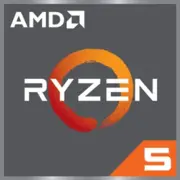AMD Ryzen 5 8500G

The AMD Ryzen 5 8500G processor is a powerful and efficient desktop CPU that delivers impressive performance for a wide range of computing tasks. With 6 cores and 12 threads, this processor offers excellent multi-threaded performance, making it suitable for tasks such as gaming, content creation, and productivity workloads.
The Zen 4 (Phoenix) architecture and 7nm technology ensure that the Ryzen 5 8500G delivers efficient and reliable performance, while the 16MB of L3 cache helps to reduce latency and improve overall responsiveness. The base frequency of 3.55 GHz can handle everyday tasks with ease, and the maximum turbo frequency of 5.0 GHz ensures that demanding applications and games can run smoothly.
One of the highlights of the Ryzen 5 8500G is its integrated graphics model, which offers a good level of performance for gaming and multimedia tasks without the need for a dedicated graphics card. This makes it a great choice for budget-conscious users or those who require a compact, energy-efficient system.
Overall, the AMD Ryzen 5 8500G processor offers a compelling combination of performance, efficiency, and integrated graphics, making it a great choice for a wide range of desktop computing needs.
Basic
Label Name
AMD
Platform
Desktop
Launch Date
January 2024
Model Name
?
The Intel processor number is just one of several factors - along with processor brand, system configurations, and system-level benchmarks - to be considered when choosing the right processor for your computing needs.
Ryzen 5 8500G
Code Name
Zen 4 (Phoenix)
CPU Specifications
Total Cores
?
Cores is a hardware term that describes the number of independent central processing units in a single computing component (die or chip).
6
Total Threads
?
Where applicable, Intel® Hyper-Threading Technology is only available on Performance-cores.
12
Performance-cores
2
Efficient-cores
4
Performance-core Base Frequency
3.55 GHz
Performance-core Max Turbo Frequency
?
Maximum P-core turbo frequency derived from Intel® Turbo Boost Technology.
5.0 GHz
L1 Cache
64K per core
L2 Cache
512K per core
L3 Cache
16MB shared
CPU Socket
?
The socket is the component that provides the mechanical and electrical connections between the processor and motherboard.
AM5
Technology
?
Lithography refers to the semiconductor technology used to manufacture an integrated circuit, and is reported in nanometer (nm), indicative of the size of features built on the semiconductor.
7 nm
TDP
65 W
Max. Operating Temperature
?
Junction Temperature is the maximum temperature allowed at the processor die.
95 °C
Memory Specifications
Memory Type
?
Intel® processors come in four different types: Single Channel, Dual Channel, Triple Channel, and Flex Mode. Maximum supported memory speed may be lower when populating multiple DIMMs per channel on products that support multiple memory channels.
DDR4-3200
Max Memory Size
?
Max memory size refers to the maximum memory capacity supported by the processor.
128GB
Memory Channels
?
The number of memory channels refers to the bandwidth operation for real world application.
2
GPU Specifications
Integrated Graphics Model
?
An integrated GPU refers to the graphics core that is integrated into the CPU processor. Leveraging the processor's powerful computational capabilities and intelligent power efficiency management, it delivers outstanding graphics performance and a smooth application experience at a lower power consumption.
True
Benchmarks
Geekbench 6
Single Core
Score
2345
Geekbench 6
Multi Core
Score
10568
Geekbench 5
Single Core
Score
1965
Geekbench 5
Multi Core
Score
8768
Passmark CPU
Single Core
Score
3903
Passmark CPU
Multi Core
Score
21687
Compared to Other CPU
Geekbench 6 Single Core
Geekbench 6 Multi Core
Geekbench 5 Single Core
Geekbench 5 Multi Core
Passmark CPU Single Core
Passmark CPU Multi Core
Share in social media
Or Link To Us
<a href="https://cputronic.com/cpu/amd-ryzen-5-8500g" target="_blank">AMD Ryzen 5 8500G</a>